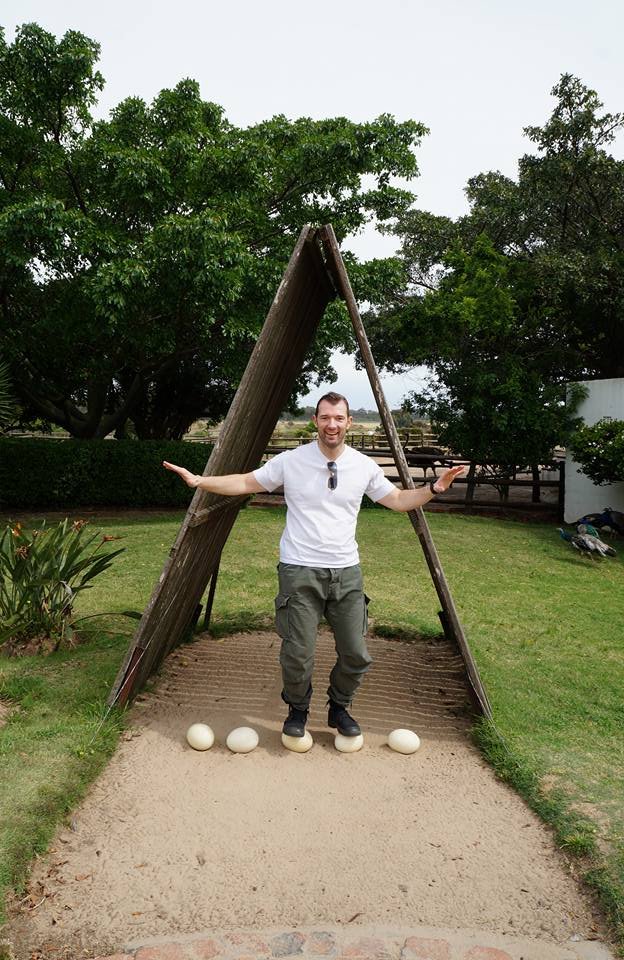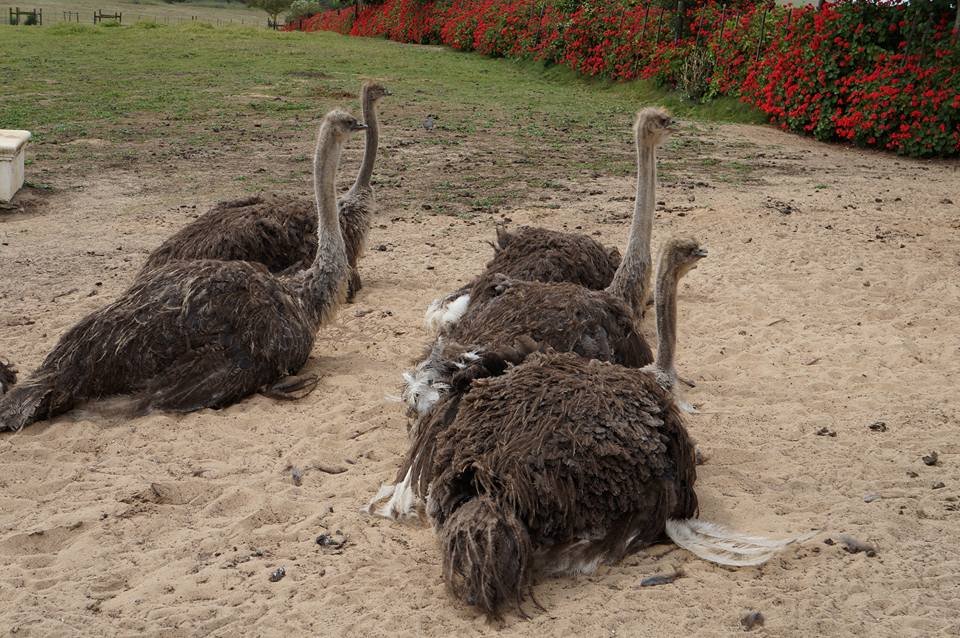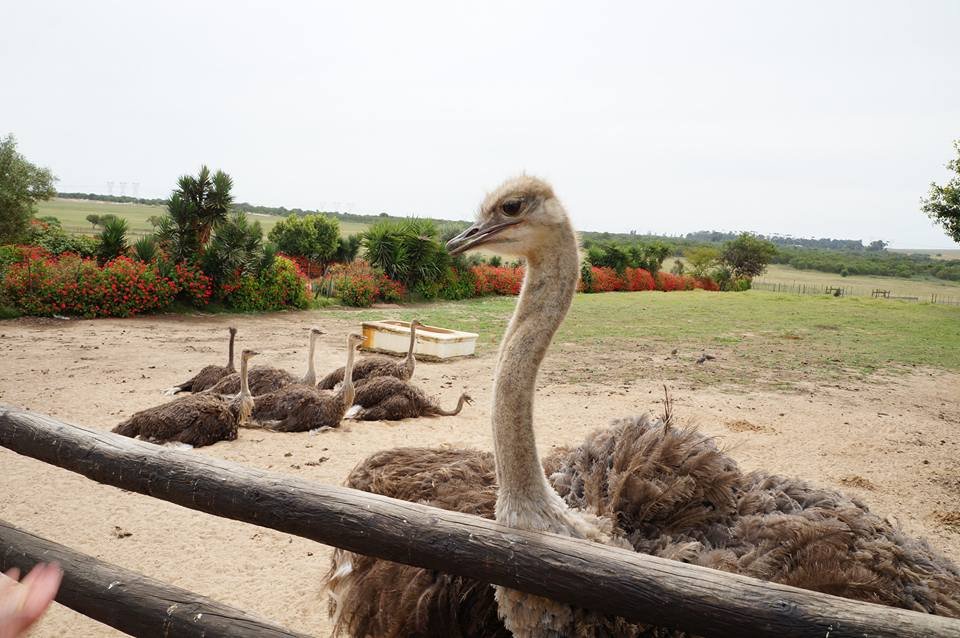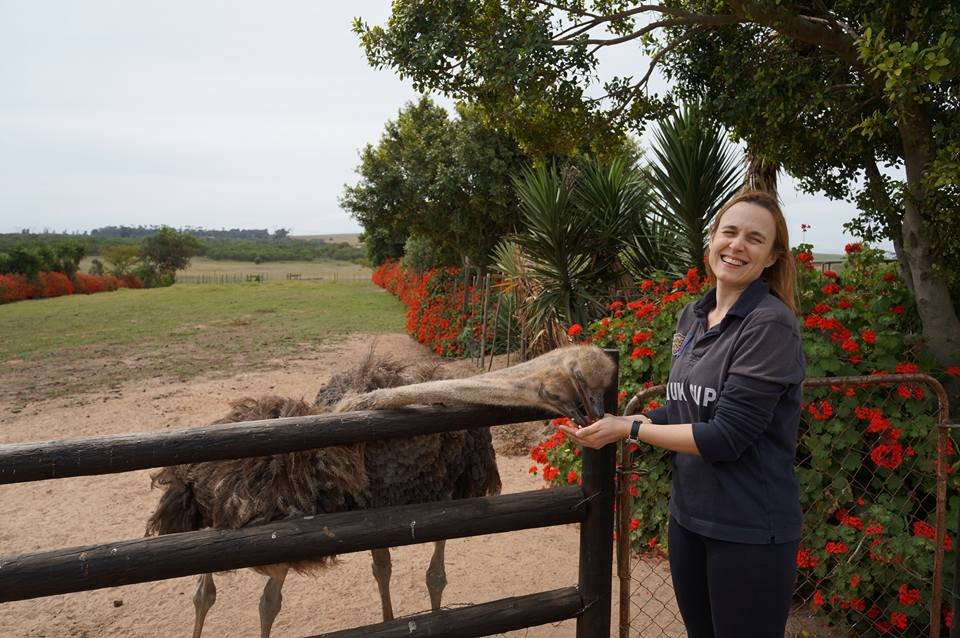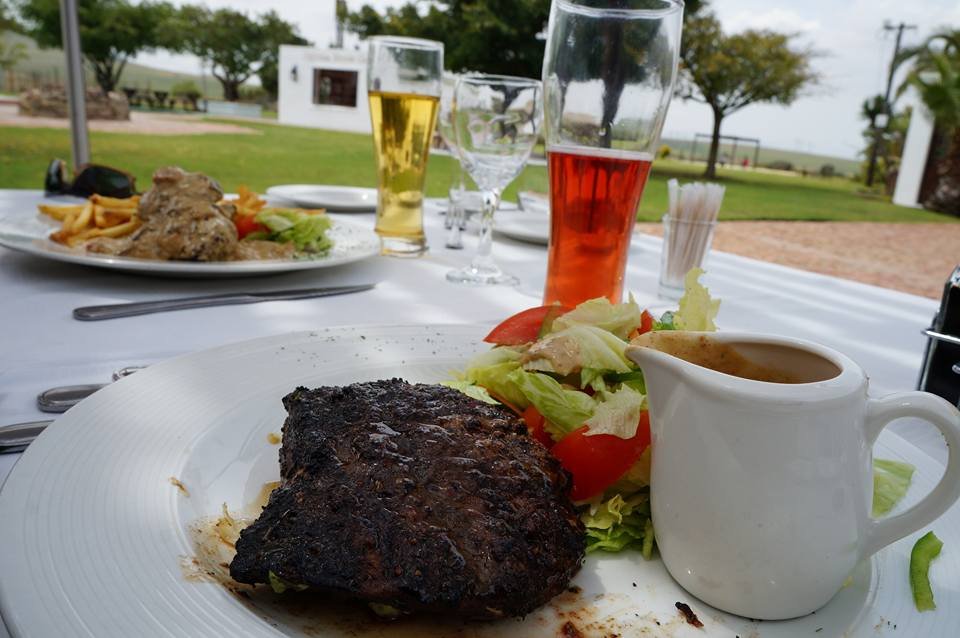We had never visited an ostrich farm before so we were very excited to discover one near Cape Town, where you can not only visit the establishment and learn more about these animals, but you will also be able to try ostrich recipes and visit its factory of exquisite beers & artisan ciders. The facilities also have a reptile rehabilitation centre, which you can also visit.
The dishes are delicious, we were really surprised by the ostrich fillets, very tasty, it is considered red meat but it has very little cholesterol. Besides, the chef accompanied the dish with sauces and vegetables that perfectly highlighted the particular flavours of this type of meat. Our congratulations!
We tell you what the experience is like: The walk begins by feeding those animals with seeds, they tickle you with their beaks in your hand when they grab their food. When they come running towards you, they generate a bit of fear because they are quite large however, they are meek, very used to the tourists who feed them. If you think about it, you feel sorry to interact with them and then eat their meat but the same thing happens with all the animals that you see alive and end up on your plate.
The only thing that disappointed us a bit was that we were hoping to take an ostrich ride and they didn’t allow it for safety reasons. The locals do ostrich races which are more than fun, but it’s true that you can fall. Not to mention if your ostrich gets angry with you …. If they are threatened they attack with strong kicks and use their claws as weapons.
You will also visit a small ostrich museum where the guide will explain its characteristics, you will ride on an ostrich to take a picture and you will stand on two of its eggs to test by yourself how strong they are. Ostriches do not fly, they run away from their predators, reaching 70 kilometres per hour. The generalized belief that the ostrich in the presence of a danger hides its head under the ground is false, they can lower its head to ground level to go unnoticed and look like a bush. They also make holes with their beaks in the ground to lay their eggs. Although indeed, they are not very intelligent, their brains are very small.
Ostrich farming seems to be a very good business since every part of it is used. Ostrich meat is very nutritious, has protein, calcium and has practically no cholesterol. You can find it in specialized butchers in most of Europe and it’s usually eaten in stews, goulash, grilled steaks, grilled and in marinades (it should be less exposed to fire than beef because it does not have interstitial fat). To obtain meat, the ideal is that the ostrich has 10 to 14 months old, during which time they reach an average weight of 100kg (38kg of usable meat). Its leather is used to make wallets, purses, shoes, boots, diaries, belts, briefcases, car interiors and other luxury leather goods and saddlery. Ostrich leather competes directly with crocodile leather, it is very soft, resistant and flexible, the feather follicles give it a particular beauty that positions it very well in the international market. Their eggs are equivalent to 24 chicken eggs in volume but with more vitamins and minerals while their shells are used to make local handicrafts. However, it’s more profitable for producers to keep the fertilized egg and make a new bird. Its feathers are also used to make feather dusters, costumes and decorations, while its eyelashes produce quality brushes.
| What do they eat? | They are omnivorous, they eat many plants, fruits, herbs and seeds, insects and small reptiles like lizards. |
| How much do they eat? | They have a voracious appetite. When they are small (1 month) they consume 4% of their weight and when they reach adulthood, they consume 2% of their weight. They can stay for 2 days without drinking water, just like camels do, these birds can retain water. |
| How is their reproduction? | During the reproduction season, males fight each other to attract females. They defend their territory and show themselves off to attract the attention of one or more females but choose only one to pair with. Once fertilization is complete, the females deposit the eggs in their own communal nests, which will have been dug in the sand by the males. Both will take turns taking care of the eggs, the males will take care of the nest at night and the females during the day. |
| How long should the wire be so they do not escape? | 3 meters |
| Size | They are the largest birds that exist, they weigh 180 kilos and measure 3 meters. Females are smaller than males. |
| Colors | Males are black with white wings and tail, while females are greyish-brown. |




